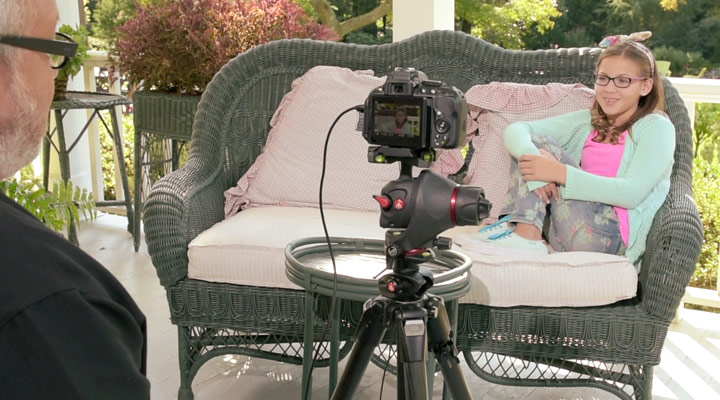Shooting Family Interview Movies and Video with a DSLR
Preserving memories for future generations
DSLR Video Tips - Shooting Family Interviews (4:02 minutes)
Producing a video or movie about your family is a great way to preserve memories and pass down stories to future generations. One of the more popular types of movies that you can shoot is a family interview. Not only is family usually willing to participate, but it's also a great way to memorialize or remember those family members closest to you.
When creating a family interview video you can include casual conversation or script out what topics you want your subjects to cover. Include important milestones in your family’s history as well as funny moments and notable relatives.
Light and Sound
Depending upon the location you choose, natural light can be all you need to illuminate your subject. Or, you could use a constant LED lighting source such as that in the SB-500 Speedlight or optional third party LED lights that are designed for video shooting.
Remember that people usually look best with soft light that's illuminating both sides of their face, slightly from the front and above their eye line. If you’re shooting outdoors, try to avoid hard direct sunlight across your subject’s face, instead choose a comfortable spot in the shade.
The next consideration is sound. If your camera is within a few feet of your subject and the area is quiet and not too echo-y, the camera’s built in microphone may work okay. But for higher quality sound, you can use an auxiliary mic like the Nikon ME-1 stereo microphone, that you can place on top of the camera to provide a little more focused sound, or with the use of an optional extension cord, it can be positioned closer to your subject, just out of frame.
Camera Set-up
Since most people aren’t comfortable staring into a lens when they speak it’s easier if you mount the camera on a tripod, position yourself next to it and then ask your subject to talk directly to you during the interview and ignore the camera. Also, it's usually best to shoot individual interviews, instead of two or more people in the same shot.
Try to ask questions that elicit complete answers and stay away from questions that encourage yes or no answers. And finally, while you should always have a number of prepared questions, be ready to go “off script” and explore interesting answers in more detail. Sometimes the best comments come from these spontaneous moments.
Remember to check your DSLR camera’s User’s Manual for instructions on its particular menu navigation and dial layout.






